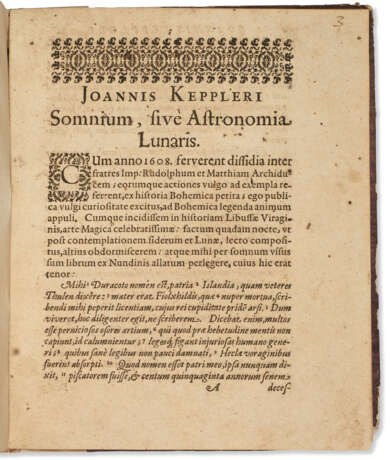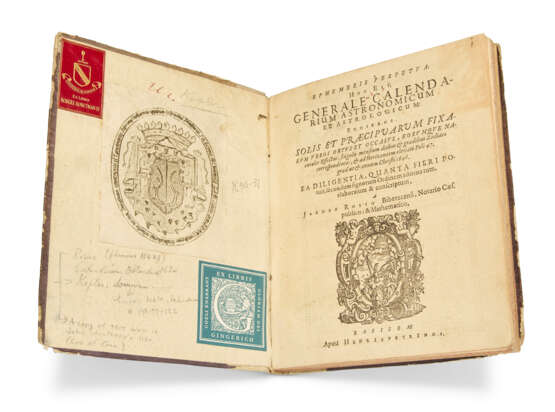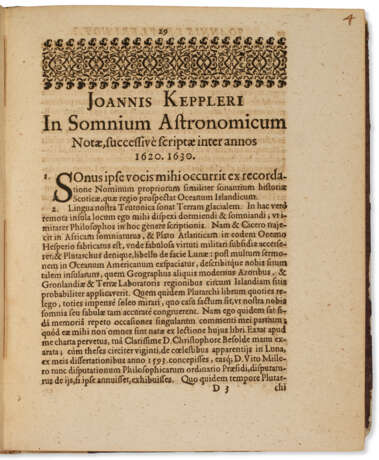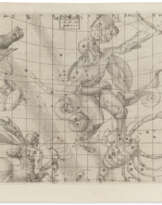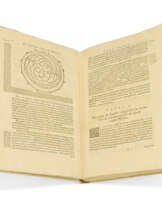ID 1360826
Lot 110 | Somnium, sive astronomia Lunaris
Estimate value
$ 12 000 – 22 000
Kepler's pioneering work of science fiction describing a voyage to the Moon. The first edition of the first part, being the complete tale with Kepler's lengthy notes. The Honeyman copy, preserved in a fine, contemporary sammelband. Kepler began this work as a student in 1609. It illustrates that a visitor to the Moon would find the movement of the Earth and the cosmos as obvious as the movement of the Moon and the cosmos is to Earth's inhabitants—an act of imagination that served to explicate Copernicanism.
Two decades later Kepler added the first-person dream framework, finished 223 accompanying notes, and began printing it intermittently at the press he set up in Sagan (the printing of the ephemerides took priority). "At Sagan, Kepler finally began to print a short book whose beginnings went back to his school days at Tubingen: his Somnium, seu astronomia lunari. The 'Dream' is a curiously interesting tract for two reasons. First, its fantasy framework of a voyage to the moon made it a pioneering and remarkably prescient piece of science fiction. Second, its perceptive description of celestial motions as seen from the moon produced an ingenious polemic on behalf of the Copernican system" (DSB).
The editing and printing of this work was interrupted by Kepler's death on 15 November 1630. The work was at first continued by his son-in-law Jacob Bartsch in Sagan in 1631 (who himself died in 1633) and finally finished by Kepler's son Ludwig in 1634 in Frankfurt. The present copy was printed entirely in Sagan and comprises the Somnium itself (pages 1-28), Kepler's scientific notes on the Somnium written between 1620 and 1630 (pages 29-79), and a lunar geographical appendix (pages 80-96). It does not include the title-page, one-leaf dedication, and the second part which is Kepler's translation of Plutarch's "De facie in orbe Lunae." The title-page and dedication were certainly printed in Frankfurt by Ludwig Kepler, the second part was printed in Sagan, either by Kepler in 1630 or, more likely, by Bartsch in 1631. In a letter cited by Caspar, Bartsch wrote that a copy of the Somnium was newly ready for his former teacher in May 1631. However, the work was not presented to the public until the autumn of 1634. Ludwig Kepler wrote in his dedication that after his own itinerant employment with a nobleman ended and he returned to Frankfurt, he was visited by his penniless step-mother with her four children. Like Ludwig, they were impoverished by the Thirty Years War. She brought the incomplete copies of the Somnium with her and begged him to prepare them for sale, which he did. Copies of the 1634 issue are very rare in their own right, but this pre-publication issue is even rarer. It was likely not for sale, but sent by either Kepler or Bartsch to a close associate. Caspar 86.
Three works bound together, quarto (190 x 154mm). Woodcut diagram in text of Somnium. (Somnium lacking second part and the two preliminary leaves, as detailed above). Contemporary quarter vellum over paste-paper boards, manuscript spine label (rubbed, corners showing). Provenance: Ignaz Dominik Chorinsky von Ledske (1729-1792, bookplate) – Robert Honeyman IV (1897-1987, bookplate) – Owen Gingerich (bookplate).
| Artist: | Johannes Kepler (1571 - 1630) |
|---|---|
| Place of origin: | Germany |
| Artist: | Johannes Kepler (1571 - 1630) |
|---|---|
| Place of origin: | Germany |
| Address of auction |
CHRISTIE'S 20 Rockefeller Plaza 10020 New York USA | ||||||||||||||
|---|---|---|---|---|---|---|---|---|---|---|---|---|---|---|---|
| Preview |
| ||||||||||||||
| Phone | +1 212 636 2000 | ||||||||||||||
| Fax | +1 212 636 4930 | ||||||||||||||
| Conditions of purchase | Conditions of purchase | ||||||||||||||
| Shipping |
Postal service Courier service pickup by yourself | ||||||||||||||
| Payment methods |
Wire Transfer | ||||||||||||||
| Business hours | Business hours
|
